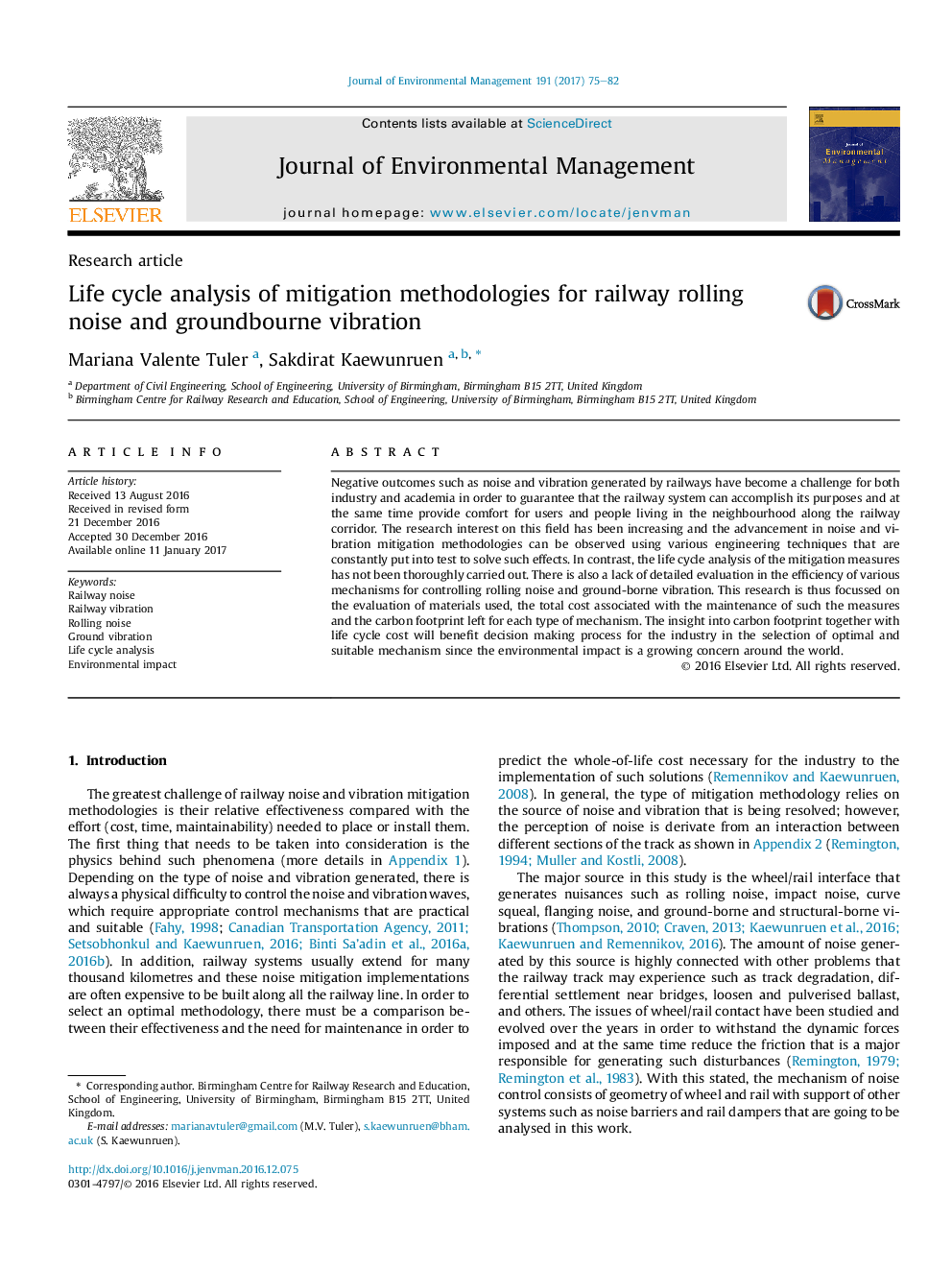| Article ID | Journal | Published Year | Pages | File Type |
|---|---|---|---|---|
| 5116774 | Journal of Environmental Management | 2017 | 8 Pages |
â¢Railway noise and vibration mitigation methodologies are reviewed and evaluated.â¢50-year life cycle evaluations have been carried out.â¢The life cycle analyses consider both cost and environmental impact.â¢The outcomes highlight practical limitations of each method.â¢The findings enable implementation of optimal mitigation methods.
Negative outcomes such as noise and vibration generated by railways have become a challenge for both industry and academia in order to guarantee that the railway system can accomplish its purposes and at the same time provide comfort for users and people living in the neighbourhood along the railway corridor. The research interest on this field has been increasing and the advancement in noise and vibration mitigation methodologies can be observed using various engineering techniques that are constantly put into test to solve such effects. In contrast, the life cycle analysis of the mitigation measures has not been thoroughly carried out. There is also a lack of detailed evaluation in the efficiency of various mechanisms for controlling rolling noise and ground-borne vibration. This research is thus focussed on the evaluation of materials used, the total cost associated with the maintenance of such the measures and the carbon footprint left for each type of mechanism. The insight into carbon footprint together with life cycle cost will benefit decision making process for the industry in the selection of optimal and suitable mechanism since the environmental impact is a growing concern around the world.
